Don't wanna be here? Send us removal request.
Text
SAS Courses Online | Analysis of Variance (ANOVA) explained with example
you set up an experiment with three groups of people. The first group gets water to drink. The second group gets some sugary fruit juice and the third group gets coffee. Now you test everyone’s reaction time. Myself wants to know if there’s any difference in reaction time between the groups. The null hypothesis says that the mean reaction time for all three groups is the same. If there were only two groups, you could use a T test to find out if there’s a difference between them. But when you have three groups or more, you need to use a different approach, the analysis of variance. When you do the experiment, the scores won’t all be the same. The total variation of all the scores is made-up of two parts, the variation within each group because the people in each group have different reaction times. And the variation between the groups because the drinks you gave each group are different. Here’s an example. Look at this set of scores. They’ve been sorted into order to make it easier to see the patterns. You can see that there’s a lot of variation within each group. Some people are faster as some are much slower. But all the groups look pretty much alike. There’s not much variation between the groups. In this case, you’d say that most of the differences due to the people and the drink didn’t make much of a difference. You would accept the null hypothesis that the type of drink doesn’t have any effect on reaction time. Now let’s look at a different set of numbers. In this case, all the scores within each group are very close to one another. There’s not a lot of variances within each group. But the groups are very different from one another. There’s a lot of difference between the groups. In this case you would reject the null hypothesis. In this case the type of drink makes a big difference. So, here’s the idea behind analysis of variance. Figure out how much of the total variance comes from the between groups variance and the within groups variance. Take the ratio of between groups to within groups of areas. And the larger this number is, the more likely it is that the means of their groups really are different, and that you should reject the null hypothesis. In the examples, it was obvious where the variance was. Now look at these numbers. You probably can’t tell if there’s a significant effect, because it’s not clear whether there’s more variance within groups or between groups, or how much. The calculation show that the ratio is 4.27. Which has a probability of .04. So, in this case you can reject the null hypothesis. With these numbers, the drink you give the people does have an effect on their reaction time. What’s that two comma 12 doing there? Those are the degrees of freedom for variance between groups and variance within groups. And here’s how you calculate the degrees of freedom when you report results for analysis of variance. This trick of separating the variants not only works when you have three or more groups, it also works when you have multiple variables, for example if you test three groups for reaction time in the morning. And you test another three groups in the evening. An analysis of variance can tell you if there’s a significant effect for the type of drink. Or if the time of day makes a difference. Or if there’s some interaction. For example, coffee might be more effective in the morning then in the evening.
With help of manually it takes time and tedious job but with help of SAS software easily calculate the find the ANOVA. This is done with help of Proc ANOVA.
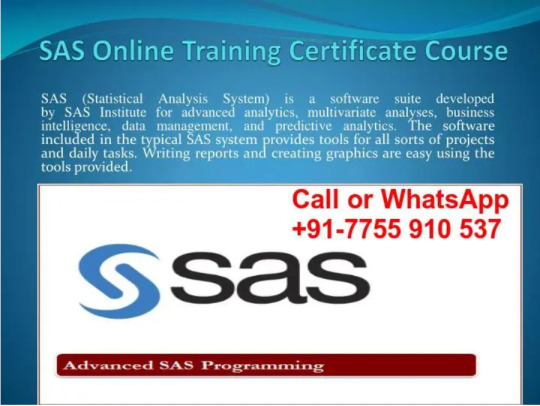
Become SAS Certified – Best SAS Training Online Course
Join Durga Online Trainer to Receive Comprehensive Training for SAS Certification in Clinical Research. For professionals working in clinical trials and data management, the best SAS online training programme.
You can also join online classes-
best clinical sas training institute in india | sas certification course online in india | Power bi online training course in india.
#sas certification course online in india#best clinical sas training institute in india#sas course training in india
1 note
·
View note
Text
Power BI certification Microsoft course | Top Ten features In Decomposition Tree
Decomposition tree is AI visualisation in Power BI. We all know that is used for Root Cause Analysis Decomposition Tree is the best visualisation and each has a lot more capability. So, in this session I’m going to talk about top 10 features for decomposition tree.
The features are conditional supporting drill through support. Sort capability, responsive design, cross highlight support, easy access by keyboard shortcuts, improve behaviour of filtering, improved scrolling behaviour, then include exclude feature and pinning the visual as dashboard. So, this is the first feature that has been applied to the decomposition tree.
Now let me go to the second feature. Now decomposition tree supports drill through feature as well. So, when you click on drill through and click on apply drill through it will redirect. Due to the second page like this so that means that decomposition tree is supporting drill through future as well. Now sort capability we can we can apply sort on our decomposition tree visualisation. For that you just need to select your visualisation click on ellipsis and you will be having an option sort by. So based on the different column you can apply sort. I applied this sort on the year column. You can apply sort ascending and descending over here. So, this is the third important feature of decomposition tree. Now let me talk about fourth component that is responsive design. So, this visualisation is responsive so even for the mobile layout it will automatically set. Is position based on the provided space over there. The fifth feature over here is cross highlight support. So, let’s say for an example when you click on any of the bar over here, it will automatically cross highlight the other visualisation over here. So cross highlighting is supported at this moment. Now the 6th feature is improved. Behaviour of filtering
The other visualisation, the 7th feature is easily accessed by keyboard shortcut. So, these are some keyboard supports which is supported at this moment. So, this was the 7th feature. Now let me move over to the eight feature that is improve scrolling behaviour. Now let me move on to the 9th feature. So, nine feature is that when we click on when we right click on everyone, we would be having an option include, exclude and sure as a table option. So, these are the actual options that has been. Very useful for this decomposition tree. And one last thing is that now pinning the visualisation in the dashboard is also supported.
So, in this session we have discussed about the
conditional formatting
drill through support
sort capability
responsive design
Cross highlight support
Easy keyboard access
shortcuts
8. Improved behavior of filtering
9. scrolling
10. Include, Exclude

Microsoft power bi certification course online
With Microsoft Power BI training from Durga Online Trainer, acquire new abilities. You may achieve your goals fast and build confidence with the aid of our hands-on, guided learning approach. Join Microsoft power bi certification course online by Durga Online Trainer with low course fee.
You can also join online classes-
best clinical sas training institute in india | sas certification course online in india | Power bi online training course in india.
0 notes
Text
SAS Online Certification Training | Infile options in SAS
Infile options are used to read the raw data which are located in external file. A raw data file is an external text file whose records contain data values that are organized in fields. Mostly SAS by default recognize the blank space as a delimiter apart from this SAS unable to recognize and give the error. For that purpose, DLM and DSD options are used for recognizing the delimiters other than blank space. DLM and DSD write along with infile statements.
To read the raw data file, the DATA step must provide the following instructions to SAS:
the location or name of the external text file
a name for the new SAS data set
a reference that identifies the external file
a description of the data values to be read.
DLM
DLM=delimiter(s)
where delimiter(s) specifies a delimiter for list input in either of the following forms:
‘list-of-delimiting-characters’ specifies one or more characters (up to 200) to read as
delimiters. The list of characters must be enclosed in quotation marks either in single or double quote.
character-variable specifies a character variable whose value becomes the delimiter, also we are writing so many delimiters in the DLM option provided that the data observation containing that delimiter. Suppose in the sas data sets are separated by comma and colon so in the DLM both delimiters re required for reading the raw data.
Example- Infile cards dlm= “ , : “ ;
DSD
We will using the DSD option in the INFILE statement to correctly read the raw data. The DSD
option changes how SAS treats delimiters when list input is used. Specifically, the DSD option
sets the default delimiter to a comma ,treats two consecutive delimiters as a missing value also
Remove quotation marks from the value.
When the following program reads the raw data file, the DSD option sets the default delimiter to a
comma and treats the two consecutive delimiters as a missing value. Therefore, the data is read
correctly.

SAS Training and SAS Certification Course
The SAS course is a best way to enter the SAS industry and you can make bright career.
Do not delay? Today contact with Durga Online Trainer and become a experts in SAS Programming.
You can also join online classes-
best clinical sas training institute in india | sas certification course online in india | Power bi online training course in india.
#sas certification course online in india#sas course training in india#best clinical sas training institute in india
0 notes
Text
SAS Online Certification Training | Infile options in SAS
Infile options are used to read the raw data which are located in external file. A raw data file is an external text file whose records contain data values that are organized in fields. Mostly SAS by default recognize the blank space as a delimiter apart from this SAS unable to recognize and give the error. For that purpose, DLM and DSD options are used for recognizing the delimiters other than blank space. DLM and DSD write along with infile statements.
To read the raw data file, the DATA step must provide the following instructions to SAS:
the location or name of the external text file
a name for the new SAS data set
a reference that identifies the external file
a description of the data values to be read.
DLM
DLM=delimiter(s)
where delimiter(s) specifies a delimiter for list input in either of the following forms:
‘list-of-delimiting-characters’ specifies one or more characters (up to 200) to read as
delimiters. The list of characters must be enclosed in quotation marks either in single or double quote.
character-variable specifies a character variable whose value becomes the delimiter, also we are writing so many delimiters in the DLM option provided that the data observation containing that delimiter. Suppose in the sas data sets are separated by comma and colon so in the DLM both delimiters re required for reading the raw data.
Example- Infile cards dlm= “ , : “ ;
DSD
We will using the DSD option in the INFILE statement to correctly read the raw data. The DSD
option changes how SAS treats delimiters when list input is used. Specifically, the DSD option
sets the default delimiter to a comma ,treats two consecutive delimiters as a missing value also
Remove quotation marks from the value.
When the following program reads the raw data file, the DSD option sets the default delimiter to a
comma and treats the two consecutive delimiters as a missing value. Therefore, the data is read
correctly.
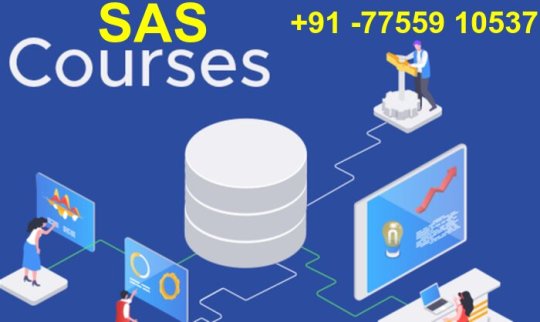
SAS Training and SAS Certification Course
The SAS course is a best way to enter the SAS industry and you can make bright career.
Do not delay? Today contact with Durga Online Trainer and become a experts in SAS Programming.
You can also join online classes-
best clinical sas training institute in india | sas certification course online in india | Power bi online training course in india.
0 notes
Text
Top Data Science Courses Online Training | How to learn Data Science
If You Torture the Data Long Enough, It Will Confess and giving good insight.
programming language you should know all these particular algorithms and try to learn each and every algorithm understand the match behind them. It is not like you have to just solve it somewhere. It no just understands how this is basically getting implemented cause the main thing is your data. Based on this you will be using different different techniques. Suppose I have a use case where I need to predict the house prediction for a particular city. So, what are the things that I’ll require? First of all, I require data, I may take it through web scrapping. I may be dependent on some third-party APIs. Then after that I may do some data analysts on that particular day. I like feature engineering, data wrangling, exploratory data analysis. When I am selecting the algorithms, I will actually do data analysis. Along with that I’ll just see I’ll just also apply some kind of maths to select a particular algorithm, perform that algorithm with the help of the mathematical techniques that I have learned in this and then I’ll be able to implement that apart from that before implementing this particular machine learning. We may use some libraries like Matplotlib, Lipsey, Born, Tableau, Power BI to actually understand about the data, how the data is basically distributed, what form the data is basically distributed, whether it is forming a normal distribution, whether it has standard normal distribution. Can I convert that into standard normal distribution? You know, whether I have outliers? Particular data, whether the data is imbalanced, whether there are lot of things that you can basically rule, you know take out more information from that particular data. Now the main stages this particular data analysis. It is not like. You have to study everything separately.

Data Science Courses Online & Training Course
Data science is an interdisciplinary profession that integrates mathematics and statistics, specialized programming, advanced analytics, AI, and machine learning to turn raw facts into actionable insights. Learn Complete Data Science from best online training institute Durga Online Trainer.
You can join also online Courses- sas certification course online in india | Power bi online training course in india
0 notes
Text
SAS Training Online in India | Time Series in SAS
Time is an amazing factor. A little baby can grow up overtime. The weather will change overtime. Stock prices can change overtime as well. Is very important for us to understand the relationships among data values overtime series. We want to learn how to use analytical model to analyse data overtime. From a mathematical standpoint, we can present time source data in three ways. The first one is called autoregressive model.

The second one is called a moving average model.
The third way is a combination of Auto Regressive and Moving Average models. The autoregressive model believe that Rome was not built in one day. The data value at the current time spot is built on top of the data values at the previous time spots. For example. Today’s stock price is built on top of the stock prices in previous days. If we use the autoregressive model to analyse a time series data. Our job is to identify how many days we need to look back in order to forecast the current value. What should be the value for coefficients like beta 0, beta one, beta 2 and so on? This is autoregressive model. In practise, we really use a short name AR to represent autoregressive model. The second model is called moving average model. This model below that. The current data value is a result from previous I expected events. For example, the current stock price can be a result of I expected events like EU S election results. The Cover 19 pandemic. A Better sales revenue. The CEO change of the company and so. If we use the moving average model to analyse time series data. Our job is to identify how many days of I expected events. We want to look back to focus the current value. What should be the values for the coefficients like theatre one, theatre 2 and so on? In practise, we really use a short name MA to represent moving average model. The third one is a combination of a RNMA model. This model believes that both AR model and MA model have a valid point. So why don’t we combine both models together in order to forecast the current value? In practise, we use a short name ARMA to represent the autoregressive moving average model. No matter which model you plan to choose. The first step is to make sure that I’m serious data follows a stationary data assumption. The concert’s data sets should have a constant mean and a constant variance. The constant mean and variance should be the same throughout the entire time series. No matter where you choose the time period. In practise, when we are given a time series data set. The very first step is to draw the time Series A plot charts. If a time series follows the stationary date assumption. The time series should be pretty flat. The data value should change around a central value. As you can see in the charts in the top charts of this light. If the time series is not stationary data sets. Then you should have an obvious trend either decreasing or increasing in the blood chart. One way face non stationary data sets. What can we do to transform this non stationary data sets into a stationary data set? In practise, we use a technique called a different thing to do the data transformation. Simply speaking, differences mean that we want to subtract previous values from the current value.. Can you see where we use full leg difference in and twelve leg difference in? Yes, we can use them to process signal data. We need to transform seasonality into stationary data set as well. In the next few lectures, I will talk about all of these techniques in more details. Fortunately, we don’t have to do difference in my hands. As long as you figure out what types of difference in you want to do. How many times you want to do the difference in?
SAS Online Training Courses & Classes
SAS is commonly used in pharmaceutical, biotech, and clinical research organisations to analyse clinical trial data. SAS programmers are critical in the analysis of clinical trial data. Durga Online Trainer is one of the SAS online training institutes in India that provides basic and advanced SAS online training, as well as a well-focused and career-oriented best clinical sas training institute in india.
0 notes
Text
Clinical Trials phase and SAS process
Research data sources software suit which is used to manage the data, to visualise the data and analyse the data. SAS is Very powerful tool in the management, analysis and visualisation of data. So many Competitors for science like R, Python, SPSS, Informatica SQL, etc. But among all those, SAS has around 36% of total job openings when compared to all other competitors like our SQL economy as well. SAS Is widely used in financial sector and clinical sector as well. There are many other competitors for size and financial sector like R Python etc. There is no other competitive process till date. So, sizes most widely used software in analysing the clinical trial data in the clinical sector. So before going to tell you what is meant by clinical trial, let me give a brief introduction about the product development process. To get into the market, it should pass through the experimental phases and then it should come to the market so that the data acquired from the experimental process is put into the SAS software and is analysed, and this as software is used to convert our data into the standards that are required by the regulatory authorities. The process for any of the molecule there are different phases in the drug development process. It starts where the experiments in the laboratory on the animals which are also called US preclinical studies or Preclinical Research. Once the drug molecule has passed through this Preclinical Research, the pharmaceutical companies will file IND application to the regulatory authorities like FDA. If that regulatory authority has approved the IND application of the pharmaceutical company, then the drug will be moved towards the clinical trial to the clinical research where the drug will be desperate focus on Safety and effectiveness in human beings.
Here there are different pages in the clinical research phase zero. Phase One, phase two, phase three and phase four. Phase zero is also called as micro dosing studies which will be connected to decide the dose. Phase One is convicted in a small group of healthy warranties to decide the safety of the drug in. Phase two is the conductor in around 100 participants to decide effectiveness of the drug and phase three of the clinical research is conducted in large Population in order to compare the drug effectiveness with the drug which is already there in the market and once this phase is completed, the pharmaceutical company should file new drug application or any application to the FDA. If the FDA approves this NDA application, then the drug can be released into the market.

See science is useful in the drug development process right from the stage of Preclinical Research towards stays over the post marketing surveillance that is the full phase four of clinical research. it can analyse your experimental data and it can say you whether the drug is really effective or not. It is also useful in submitting your findings to the regulatory authorities like USFDA. See, everything we communicate with the SAS will be in the form of a SAS program, any software. Is a combination of steps step. How exactly is this clinical science useful in the real time and what is the real time workflow in a pharmaceutical industry or in CRF programme a success? Developers say you will be getting the clinical research. This year in the form of paper or electronic format policy RF that is case report form. That data from the case report form is called as raw data. This raw data it will be sent to the pharmaceutical company where the SAS programmer is working and this SAS programmers work is now to convert. This round, the other information from the CRF, if that is the case, report form into a standardised SDTM data set which is approved by FDA regulatory authority. So, FDA authority has set some standard guidelines to analyse the clinical trial data. Each and every programmer should adapt to these guidelines and prepare their clinical trial data as per the SDTM and Adam guidelines approved by FDA. And these guidelines were prepared by an organization called as CDISC is nothing but clinical. Interchange standards consortium that means this organization is allowing us to change our clinical trial data into a standard format that can be easily readable by the regulatory authorities. SDTM data set will be converted into an ADAM data set that is also called as analysis data model by using certain rock steps and these analysis data sets will be further. To generate report scoreless tables, listings and figures who should be together submitted to USFDA. in order to get an approval for the drug you’re working on from the regulatory bodies like FDA. Not only that one there are many other regulatory authorities like European Medicines Agency. Almost all the regulatory authorities will have some standard for match like this and 80% of the global regulatory authorities are accepting CDISC SDTM Adam Standards for regulatory clinical trial data submission. The clinical trial data will be coming into the pharmaceutical. Industry in the form of raw data sets, which will then be converted by a SAS programmer into a standardised SDTM data set. These SDTM data sets will then be converted into ADAM data sets, and the report’s data visualisation will be done in the form of tables listings of figures, which will then be submitted altogether to the regulatory authorities. So, this is all about the size and how and where write the SAS programming code in clinical research side and what is a real time workflow of person and how to write the science programme. Thank you.
Clinical Trials SAS Programming Training Online
To become a qualified clinical sas research associate, reserve your position in the Durga Online Trainer. Durga Online Training Academy can provide you with industry-recognized certificates. Begin your trip right now.
You can join also online classes-
sas certification course online in india | Power bi online training course in india | Data Science Online Course India
0 notes
Text
Registered with us for SAS global Certification
Registered with us. Our training is completely practical oriented training which supports you 100% to clear your certification exams and to get a job. It’s been almost eight and half years I’m into this online training industry. And trained hundreds of students over the spirit of time. There are many of our students who cleared certification with very good percentages and also got good opportunities in different industries. We can also provide I provided all the links in the description area to view or download the material in the website blog or the documents that are very useful in the SAS global certification exam and for interview purpose.

SAS Global Certification Program
Unleash the full potential of your SAS investment by becoming more creative and imaginative in your application of SAS technology. This is a comprehensive SAS programming certification preparation course. It is intended for everyone who wants to learn SAS programming. We offer SAS training and global certification in India and around the world. Those who desire to work in SAS, Clinical SAS, or Data Science should take the SAS programmer certification course.Take a free online demo class today.
You can join also online classes-
best clinical sas training institute in india
sas certification course online in india
Power bi online training course in india
Data Science Online Course India
0 notes
Text
Random Forest in R
Random forest is very very important tools used in the prediction technology. Random Forests are one of the most popular and most powerful supervised Machine Learning algorithms in Machine Language.
Advantage of random forest
It mainly works on classification
Both classification and regression task are evaluated
Easily handle the missing values and maintain accuracy for missing data
Wont overfit the model
Handle large dataset with higher accuracy
Random Forest Pseudo code
Assume number of cases in the training set is N. then sample of these N cases is taken at random but with replacement
If there are M input variables or features, a number m
Each tree is grown to the largest extent possible and there is no pruning.
Predicting new data by aggregating the predictions of the n trees (Majority vote for classification and average for regression).
The more trees in the forest the more robust the prediction. In the same way in the random forest classifier, the higher the number of trees in the forest gives the high accuracy results. To model multiple decision trees to create the forest you are not going to use the same method of constructing the decision with information gain or gini index approach, amongst other algorithms. In the random forest approach, a large number of decision trees are created. Every observation is fed into every decision tree. The most common outcome for each observation is used as the final output. A new observation is fed into all the trees and taking a majority vote for each classification model.
An error estimate is made for the cases which were not used while building the tree. That is called an OOB (Out-of-bag) error estimate which is mentioned as a percentage.
The R package “random Forest” is used to create random forests.
The R package “random Forest” is used to create random forests.
R: Random Forest Model for Regression
Random Forest Model for Regression is a bagged decision tree modification that creates a wide collection of de-correlated trees to increase predictive performance. Join Durga Online Trainer Institute and lean complete Data Science.
R: Random Forest Model for Regression
Random Forest Model for Regression is a bagged decision tree modification that creates a wide collection of de-correlated trees to increase predictive performance. Join Durga Online Trainer Institute and learn complete Data Science.
You can join also online classes-
best clinical sas training institute in india
sas certification course online in india
Power bi online training course in india.
0 notes
Text
R, SAS, Power BI Online Classes | Decision Tree in R
Decision tree mostly used in forecasting or predictive modelling. It is widely used in the data science for getting the relevant outcome. Mostly used in machine learning, data mining and developing the predictive model. Decision tree is a graph to represent choices and their results in form of a tree. The nodes in the graph represent an event or choice and the edges of the graph represent the decision rules or conditions. This is used in real data analysis so many examples are there /here listed few examples
Predicting the loan—- bad or good credit/also known as risk management system
Predicting the email—– spasm or not spasm
Predicting the cancer——- carcinogenic/not carcinogenic
So many examples are there, for coming to the end point lot of vigorous validation is required for fitting the model coz accuracy is matter. For decision tree required lot of training data’s or observed data. This can also determine by SAS by using the regression/multiple linear/logistic regression model. Even we are also able to determine by power BI visual tools that is known as decomposition tree visual.
The R package “party” is used to create decision trees. We will use the ctree() function to create the decision tree and see its graph.

Decision Tree in R Programming
Decision Trees are a well-known Data Mining approach that employs a tree-like structure to offer outcomes based on input decisions. If you’re looking for a Power BI Online Training course near me, look no further. If so, Durga Online Trainer is the greatest training institute for learning comprehensive Data Science, SAS, and Power bi online training course in india at a very low course charge.
0 notes
Text
Is Clinical SAS Certification Mandatory?
Most of time this question will arise whether SAS certification is mandatory or not. In India it’s not required mostly but having to globally SAS certified nice one. If you are planning to work in abroad, must should have certification. Still so many advantages having SAS certification
Improve your employment opportunity
SAS skills are high in demand(clinical/banking)
Demonstrate that you having fair knowledge of SAS and understand digital bragging rights
Allow employers to easily recognize you
One time achievement /its valid throughout life
So many job opportunity are there which are listed below
SAS analyst
Junior SAS programmer
Clinical Programmer
SAS developer
Clinical Data analyst
Principle programmer
SAS Data scientist
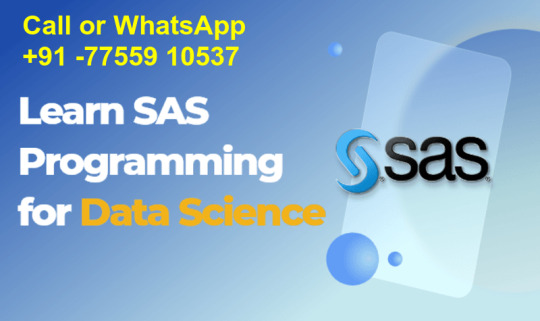
Clinical SAS certification cost
Clinical SAS analysts use a combination of statistical perspective , programming & domain expertise to do so. Clinical SAS Training duration is Two Months course, our Clinical SAS certification cost is a very low compare to other training center. join class online from Durga Online Trainer.
You can join also online classes-
best clinical sas training institute in india
sas certification course online in indiaPower bi online training course in india.
0 notes
Text
SAS Training with placement in India | Difference Between where and If statement in SAS
Where and If statements both are same only used for data mining and cleaning but few key differences are there which are arranged in tabular manner.
S. No
Where statement
If statement
1
Used for data Mining
Used for data Mining
2.
Cannot create new variable in SAS
Can create new variable in SAS
3.
Can apply in proc steps directly in SAS
Can not apply in proc steps in SAS
4
Can apply in operators like between
Can not apply in operators like between
5.
Can not apply in multiple statements
Can apply in multiple statements in SAS so many times we will write if statements
6
Only filtered observations read from filtered data
All observations are read from input data
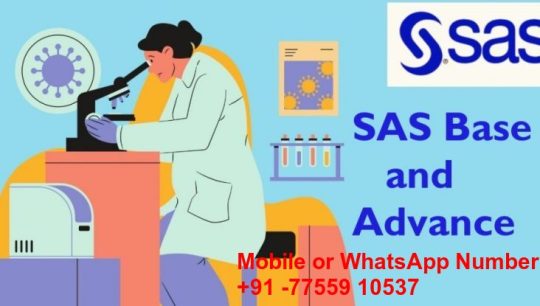
SAS Certification Course Training Online
We offer best SAS Certification Course Training Online in India and Aboard and you can experts in analyses and data and report on data and export result to these format like Excel, PDF, HTML and understand the concept of the SAS programming language. Learn Full SAS Course Online from Durga Online Trainer.
You can join also online classes-
best clinical sas training institute in india
sas certification course online in india
Power bi online training course in india.
0 notes
Text
SAS Training with placement in India | Difference Between where and If statement in SAS
Where and If statements both are same only used for data mining and cleaning but few key differences are there which are arranged in tabular manner.
S. No
Where statement
If statement
1
Used for data Mining
Used for data Mining
2.
Cannot create new variable in SAS
Can create new variable in SAS
3.
Can apply in proc steps directly in SAS
Can not apply in proc steps in SAS
4
Can apply in operators like between
Can not apply in operators like between
5.
Can not apply in multiple statements
Can apply in multiple statements in SAS so many times we will write if statements
6
Only filtered observations read from filtered data
All observations are read from input data
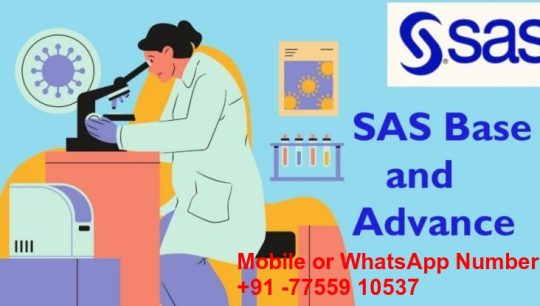
SAS Certification Course Training Online
We offer best SAS Certification Course Training Online in India and Aboard and you can experts in analyses and data and report on data and export result to these format like Excel, PDF, HTML and understand the concept of the SAS programming language. Learn Full SAS Course Online from Durga Online Trainer.
You can join also online classes-
best clinical sas training institute in india
sas certification course online in india
Power bi online training course in india.
0 notes
Text
Clinical SAS Online Training | SDTM subclass of Qualifier Variables
Qualifier variables describe the results of an observation with text or numeric values.it is divided into 5 subclass which are listed below
1.Grouping Qualifiers—These are used to group together a collection of observations within the same domain.
2. Synonym Qualifier—- It specify the alternative name of a particular variables.
3. Result qualifier— It describes the specific result associated with the topic variable for a finding.it is the answer to the question raised by the topic variable.
4. Variable qualifier– These are used to further modify or describe a specific variable within an observation and it only meaningful in the context of the variable if they qualify.
5. Record qualifier-it defines the additional attributes of the observations.
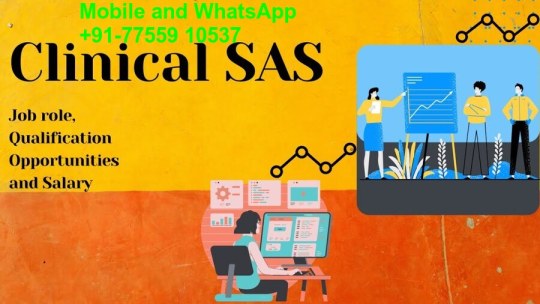
Top Clinical SAS Online Training in India
Are you want to learn Clinical SAS? If yes then Durga Online Trainer is the top Clinical SAS Online Training Institute in India with nominal course fee.
You can join also online classes-
best clinical sas training institute in india
sas certification course online in india
Power bi online training course in india.
0 notes
Text
SAS Certification Exam
SAS Certification is highly demanded coz it enhances the candidate credibility and job security. It increases the getting job in MNC company as respect to normal SAS skills (without certified). SAS certification is the proof of your SAS skills. This certificate valid throughout the life /for getting the certification need to log sas.com and book the slots.in sas.com website you will get all the information’s like SAS exam patten/ how many questions/questions marks /passing criteria/fees etc. There are two ways for SAS certification exam. It is completely online test or need to book some specific center where you will go and give the exam. It is also possible in home also need to be laptop, web camera and mike. It is a kind of one-time achievement.
SAS certification is not a mandatory in India but if you are working in abroad, it is compulsory, indicates how much you are associated with this field. So, it is very tricky question whether SAS certification is mandatory or not. Generally nice to have SAS certification. Its cost around 120 USA dollar. There are four SAS certification exam
SAS certified associate- Programming fundamentals using SAS 9.4
SAS certified specialist- Base programming using SAS 9.4
SAS certified professional- advance programming using SAS 9.4
SAS certified clinical trial programmers using SAS 9
Mostly SAS certification questions are objective type question but some sort of practical coding is required for getting the cracking of SAS certified specialist and professional. Mostly preferring the SAS certified specialist base programming using SAS 9.4.
How to Prepare for SAS Base Certification Exam
Durga Online Trainer is a best SAS online training institute in India and we prepare SAS Certification course with very low cost fees.
You can join also online classes-
best clinical sas training institute in india
sas certification course online in india
0 notes
Text
Fresher Job in Clinical SAS Programming
It’s important to have job-hunting strategies so you have more outlets for finding a job. Looking for a new job can take some time, making it important to try different methods to speed up the process. By using job-hunting strategies, you can continue to progress in your career and move on to better opportunities. As fresher in clinical SAS getting the job is somewhat tough but not like that, we are not going to get job. First of all, we will find the best strategy which are listed below
Look for internship so many MNC companies offering internship having some stipend
Look for some clinical data course(skills) like CDM/PV coz directly or indirectly attached with clinical SAS programmer so getting the chance of job is more
Knowledge of clinical trials domain and its phases, in other words this kind of experience will also count for SAS programmer as initial. We already know that clinical trails data finally going to the SAS programmer.
Make network /create your profile in linkedin
Must associate with some SAS fresher forum
Don’t try to put hardcore SAS programmer as initially job hunting
Global SAS certification is must /it kept away from crowds also it reflects your credibility.
How do I start a career in SAS programmer?
If you want to become a SAS programmer, the best way to start your career is by obtaining a degree. Then, you must specialize in SAS and build your skills until your competency is adequate for the employer you’re eyeing. Do not go anywhere just join Best SAS Online Training Provider Institute (Durga Online Trainer).
You can also visit
best clinical sas training institute in india | sas course training in india | power bi online training course in india
0 notes
Text
Clinical SAS Programming course near me | Proc Format in Clinical SAS
Proc format is important tools which are mostly used in clinical SAS coz naming conventions are too much as per SDTM and ADAM specification.
Proc format is different from format and in format options. Proc format means user defined format or some guidelines format. We prefer to show the analysed data in different format but original data format is different.in other words it is easily explain by original data format changed into user defined format.
Proc format is 4 types
Character to character
Example Male to M
Character to numeric
Example Male to 1
Numeric to character
Example 10-11 to young
Numeric to numeric
Example= 10-11 to 1
Character variables datasets are always enclosed with single or double quote because it is case sensitive. If you have characters in left side during proc format always used the dollar sign and also creating the format values statements are used.
Clinical SAS programming course online with low course fee
Durga Online Trainer is a best Clinical SAS programming course online near me. Join Clinical SAS Course and become Clinical SAS Programmer experts with very cheap fee or lowest fee
You can join also online classes-
SAS Certification Course online in india
Clinical SAS Online Course
DATA Science Course
Python Programming Language Course
R Programming Language
0 notes